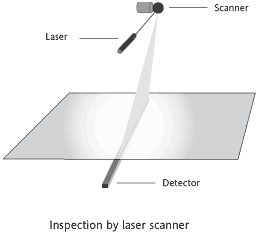Need help choosing the right product?
Our tool will match the best product to your needs
Launch product selectorWelcome to the USA Website
We have detected that you may prefer the United Kingdom site. Please use the language dropdown above to change your selection if required.
The float process, invented by Sir Alastair Pilkington in 1952, makes flat glass. This process allows the manufacture of clear, tinted and coated glass for buildings, and clear and tinted glass for vehicles.
There are around 260 float plants worldwide with a combined output of about 800,000 tonnes of glass a week. A float plant, which operates non-stop for between 11-15 years, makes around 6000 kilometres of glass a year in thicknesses of 0.4mm to 25mm and in widths up to 3 metres.
A float line can be nearly half a kilometre long. Raw materials enter at one end and from the other plates of glass emerge, cut precisely to specification, at rates as high as 6,000 tonnes a week. In between lie six highly integrated stages.
Fine-grained ingredients, closely controlled for quality, are mixed to make a batch, which flows into the furnace which is heated to 1500°C.
Float today makes glass of near optical quality. Several processes – melting, refining, homogenising – take place simultaneously in the 2,000 tonnes of molten glass in the furnace. They occur in separate zones in a complex glass flow driven by high temperatures, as the diagram shows. It adds up to a continuous melting process, lasting as long as 50 hours, that delivers glass at 1,100°C, free from inclusions and bubbles, smoothly and continuously to the float bath. The melting process is key to glass quality; and compositions can be modified to change the properties of the finished product.

Glass from the melter flows gently over a refractory spout on to the mirror-like surface of molten tin, starting at 1,100°C and leaving the float bath as a solid ribbon at 600°C.
The principle of float glass is unchanged from the 1950s but the product has changed dramatically: from a single equilibrium thickness of 6.8mm to a range from sub-millimetre to 25mm; from a ribbon frequently marred by inclusions, bubbles and striations to almost optical perfection. Float delivers what is known as fire finish, the lustre of new chinaware.

Despite the tranquility with which float glass is formed, considerable stresses are developed in the ribbon as it cools. Too much stress and the glass will break beneath the cutter. The picture shows stresses through the ribbon, revealed by polarized light. To relieve these stresses the ribbon undergoes heat-treatment in a long furnace known as a lehr. Temperatures are closely controlled both along and across the ribbon.
The float process is renowned for making perfectly flat, flaw-free glass. But to ensure the highest quality, inspection takes place at every stage. Occasionally a bubble is not removed during refining, a sand grain refuses to melt, a tremor in the tin puts ripples into the glass ribbon. Automated on-line inspection does two things. It reveals process faults upstream that can be corrected enabling computers downstream to steer cutters round flaws. Inspection technology now allows more than 100 million measurements a second to be made across the ribbon, locating flaws the unaided eye would be unable to see.
The data drives ‘intelligent’ cutters, further improving product quality to the customer.

Diamond wheels trim off selvedge – stressed edges – and cut the ribbon to size dictated by computer. Float glass is sold by the square meter. Computers translate customers’ requirements into patterns of cuts designed to minimize wastage.
The rolling process is used for the manufacture of solar panel glass, patterned flat glass and wired glass. A continuous stream of molten glass is poured between water-cooled rollers.
Rolled glass is increasingly used in PV modules and thermal collectors because of its higher transmittance. There is little cost difference between rolled and float glass.
Rolled glass is special due to its macroscopic structure. The higher the transmittance the better and today high performance low iron rolled glass will reach typically 91% transmittance.
It is also possible to introduce a surface structure on the surface of the glass. Different surface structures are chosen depending on the intended application.
A burred surface structure is often used to enhance adhesive strength between EVA and glass in PV applications. Structured glass is used in both PV and thermo solar applications.
Patterned glass is made in a single pass process in which glass flows to the rollers at a temperature of about 1050°C. The bottom cast iron or stainless steel roller is engraved with the negative of the pattern; the top roller is smooth. Thickness is controlled by adjustment of the gap between the rollers. The ribbon leaves the rollers at about 850°C and is supported over a series of water cooled steel rollers to the annealing lehr. After annealing the glass is cut to size.
Wired glass is made in a double pass process. The process uses two independently driven pairs of water cooled forming rollers each fed with a separate flow of molten glass from a common melting furnace. The first pair of rollers produces a continuous ribbon of glass, half the thickness of the end product. This is overlaid with a wire mesh. A second feed of glass, to give a ribbon the same thickness as the first, is then added and, with the wire mesh “sandwiched”, the ribbon passes through the second pair of rollers which form the final ribbon of wired glass. After annealing, the ribbon is cut by special cutting and snapping arrangements.
Product Selector
Our tool will match the best product to your needs
Launch product selectorContact Us